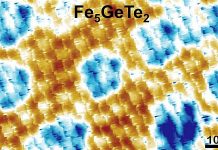
The hunt for gravitational waves, ripples in the fabric of spacetime, has opened a new window onto the cosmos, offering insights from the collision of black holes to the fusion of neutron stars.
The 2017 landmark detection of gravitational waves from a binary neutron star merger was a pivotal moment, revealing secrets from the origins of gamma-ray bursts to the cosmic recipe for heavy elements.
Yet, a frontier remains uncharted: the gravitational waves from post-merger remnants, elusive signals that could unlock the mysteries of neutron star interiors but lie tantalizingly out of reach for today’s detectors.
Enter a team of Japanese researchers, who are pioneering an approach to bridge this gap. Led by Associate Professor Kentaro Somiya and Dr. Sotatsu Otabe from Tokyo Tech, these scientists are exploring the frontier of gravitational wave detection (GWD) with a novel concept: the Kerr-enhanced optical spring.
Modern GWDs operate on the brink of what is physically possible, capturing the faintest whispers of cosmic cataclysms.
However, their ability to detect the nuanced afterglow of neutron star mergers is limited by the frequency of these signals, which fall outside the detectors’ current range.
The solution, traditionally, might be to crank up the power within these detectors’ optical cavities, but this runs the risk of thermal damage, a catch-22 that has hampered progress.
The breakthrough from Somiya, Otabe, and their team offers a way around this conundrum. Instead of simply boosting power, they’ve turned to the optical Kerr effect, a phenomenon where the intensity of light alters the medium’s refractive index, creating an internal signal amplification.
By introducing a Kerr medium into an optomechanical cavity, they’ve created an optical spring that can enhance its resonant frequency without the thermal risks of high power.
This Kerr-enhanced optical spring does not just tweak the existing setup; it revolutionizes it. The optical spring’s stiffness—and thereby its sensitivity to gravitational waves—is boosted not by brute force, but by finesse.
In their experiments, the team achieved an enhancement of the optical spring constant by a factor of 1.6, shifting the resonant frequency from 53 Hz to a higher 67 Hz. It’s a significant leap, and the researchers believe further refinements could push this even higher.
This innovation opens up new avenues not just for gravitational wave detection but for the broader field of optomechanics.
The ability to cool macroscopic oscillators to their quantum ground state or improve the sensitivity of optical devices has vast implications across physics and engineering.
As we stand on the brink of a new era in astrophysics, the work of Somiya, Otabe, and their colleagues represents a beacon of progress.
By harnessing the subtle interplay of light and matter, they are crafting the tools to peer deeper into the cosmos, revealing the secrets held by the universe’s most extreme objects. This isn’t just a step forward in gravitational wave detection; it’s a leap into the future of observing the cosmos.
The research findings can be found in Physical Review Letters.
Copyright © 2024 Knowridge Science Report. All rights reserved.



